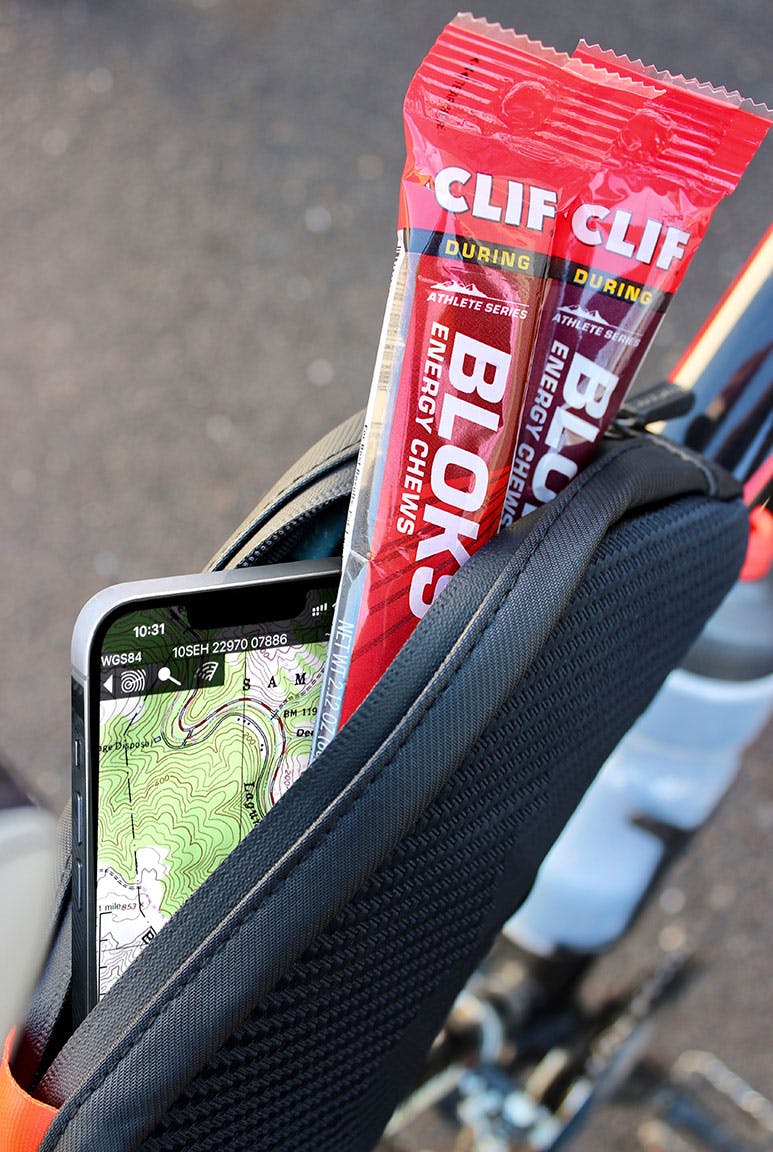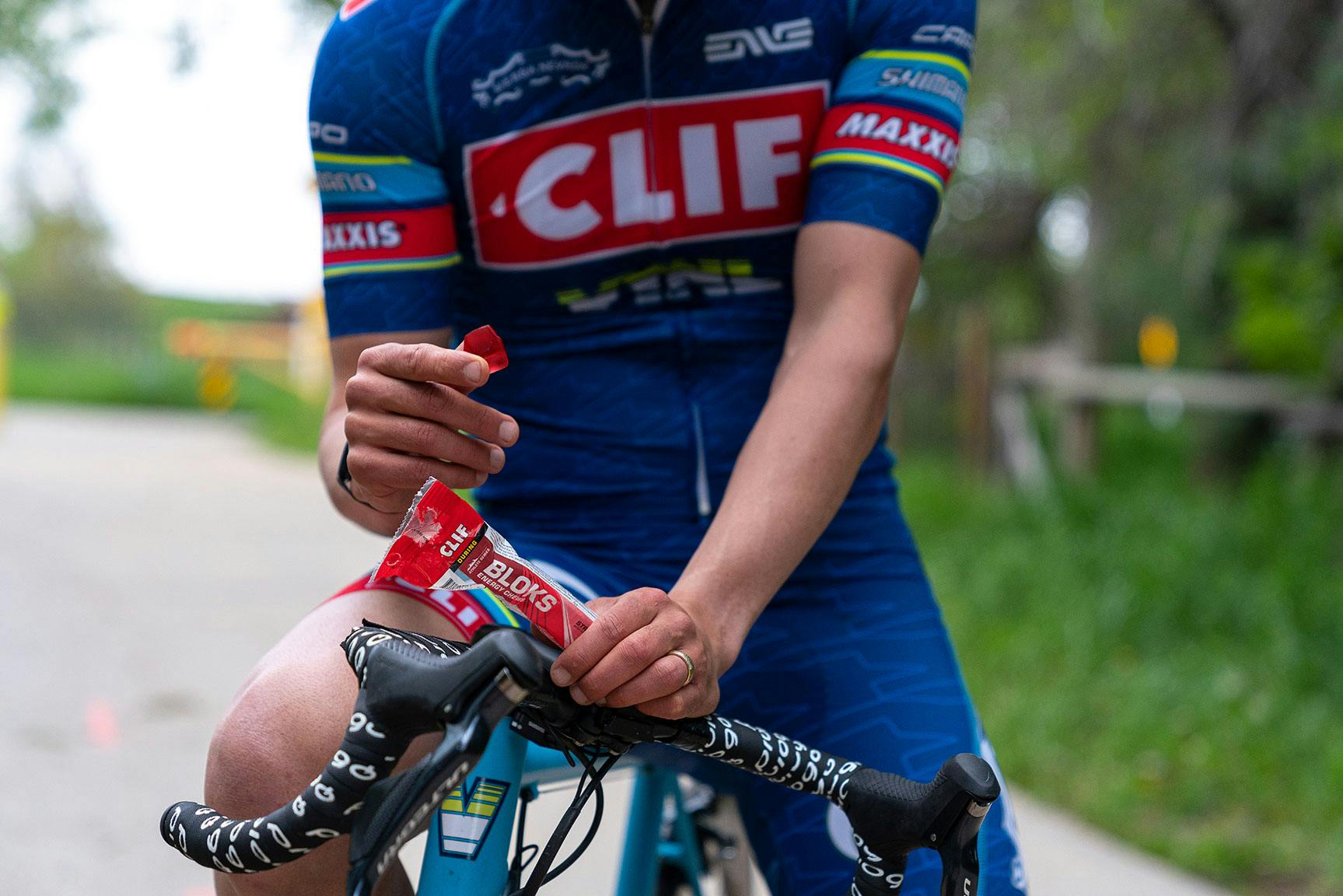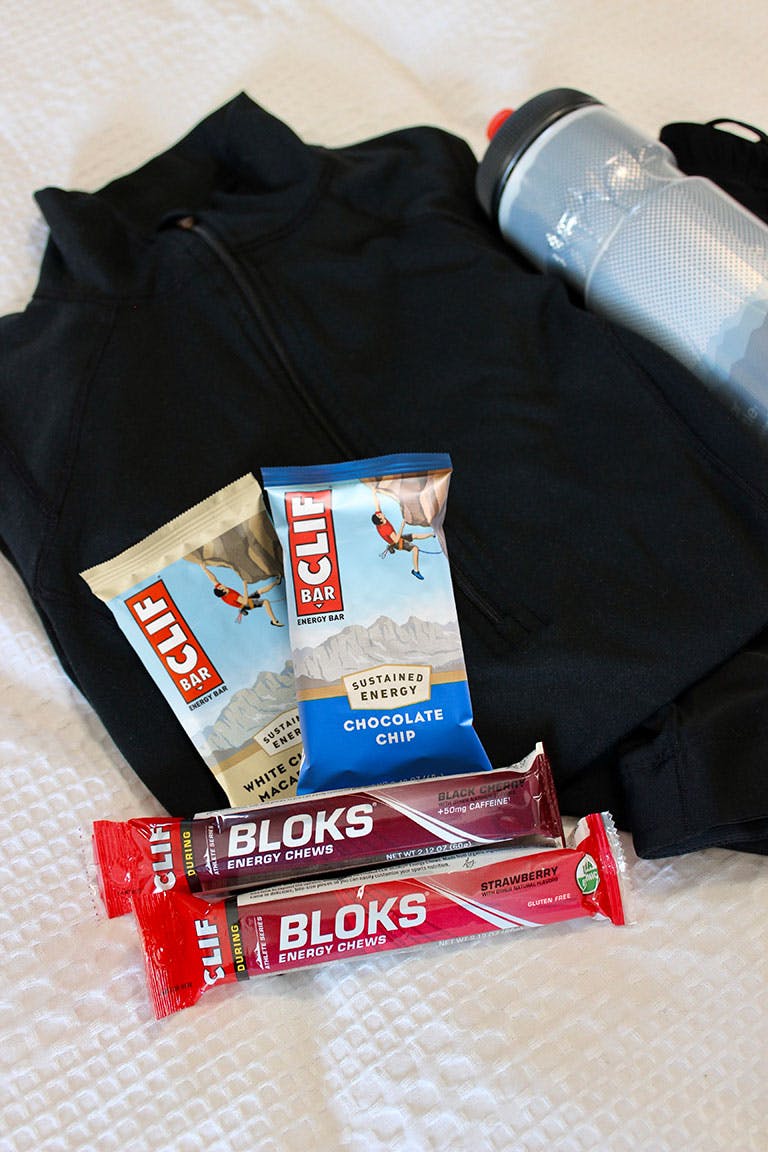The ideas and suggestions written below are provided for general educational purposes only and should not be construed as medical advice or care. Always seek the advice of a physician or other qualified health provider before beginning any physical fitness or health- and nutrition-related activity.
While the pandemic has brought us challenges, it has also brought opportunities to establish fitness routines in the comfort of our own homes or explore the outdoors through new socially distanced activities like cycling. Whether you’re riding inside or outside, how you fuel affects how you feel, and knowing what to eat before (and during) your ride can help you have the best ride possible!
Cycling Tips for Beginners
Whether you’re just starting out, increasing the length or intensity of your ride, or are ready to transition to outdoor riding, these tips will help you feel your best.
- Don’t overlook nutrition. With all the preparation related to gear, bike fittings, and learning the rules of the road, it’s easy to overlook nutrition. Even if you don’t think you’ll need to fuel up, be prepared to do so anyway, just in case.
- Recognize that carbohydrates are king. Carbohydrates are the preferred energy source for exercising muscles. So, when considering what to eat before and during cycling, focus on that. Initially, outdoor cycling may be more challenging and take you longer than indoor as you adapt to real hills and varied terrain, as well as sun, heat, and wind. So, be ready with some extra fuel to help power through!
- Fuel throughout the day. Good nutrition doesn’t start when your workout begins. It’s a habit that builds. Not eating enough calories or carbohydrates throughout the day can mean poor energy levels on and off the bike.
This article will help you navigate what to eat and when to eat, both before and during cycling, and how to put these tips into action. You’ll also learn what to avoid for the best cycling experience possible!
What Should You Eat Before Cycling?
Exercising muscles prefer glycogen, the carbohydrate stored in your muscles. Your last meal or snack before cycling is an opportunity to top off your storage tank, which can help postpone fatigue and ensure you have the energy for an enjoyable ride. Trial and error are important when you’re getting started. If you feel like you’re dragging during a ride, try switching up the timing of your food intake or experiment with different foods.
Follow These General Guidelines to Help You Get Started:
Short Ride (~60 minutes)
For rides lasting about an hour, focus on easily digestible, “quick” carbohydrate foods about 30 minutes before your ride.
Fuel Ideas Within 30 Minutes of Cycling
- A ripe banana
- Dried fruit, such as dates or raisins
- CLIF BLOKS® Energy Chews
Long Ride (>60 minutes)
Before a long bike ride, you’ll need to prepare with more calories in the form of carbohydrates.
Three to four hours before, fuel with a carbohydrate-rich meal, including moderate amounts of fiber, protein, and fat, like the options below. Don’t forget to hydrate!
Meal Ideas 3-4 Hours Before Cycling
- Loaded oatmeal bowl with fruit, nut butter, and a side of milk
- Sandwich with lean protein and a side of fruit
- Sweet potato with 4 ounces of chicken and cooked spinach
- Rice bowl with tofu, cooked vegetables, and a light sauce
Alternatively, you may not need a full meal and want to try energizing your body with a smaller amount of food one to two hours pre-ride. CLIF BAR® energy bar is one of my go-to pre-workout foods. It’s a convenient way to get a blend of plant protein, fat and carbohydrates that can help sustain energy during your rides. Should you start tackling rides that are two hours or more, include both a meal three hours out and something smaller an hour in advance.
Fuel Ideas 1-2 Hours Before Cycling
- Avocado toast
- CLIF BAR® energy bar
- Banana and peanut butter
- Pretzels and hummus
What Should You Eat While Cycling?
For rides under an hour, focusing on your fluid intake should be enough. However, if you’re planning a high-intensity ride in the morning before breakfast, grabbing any easy-to-carry source of carbohydrates, like energy chews, may be beneficial.
For rides over an hour, your body will be tapping into its glycogen stores and you’ll need to replenish them.1 Low fuel stores coupled with dehydration can cause notable changes in energy levels, focus, and performance during longer rides.1 Drinking fluids and eating carbohydrates can provide fast fuel to working muscles and help prevent you from hitting the dreaded wall, or “bonking”. This is what athletes describe as feelings of sudden fatigue and lack of energy during endurance training, and is linked to depleting your carbohydrate stores.2
My go-to cycling foods to sustain energy on these long, intense rides are CLIF BLOKS. It is a quick source of carbohydrates that can be conveniently stashed in a jacket pocket or saddlebag and are easy to open mid-ride. Eat one packet CLIF BLOKS or one or every hour during an activity lasting longer than one hour (it doesn’t have to be all at once) and always follow with water.
Fuel Ideas for Intense Rides Over an Hour
- CLIF BLOKS Energy Chews
- Salted dates
- Mashed sweet potato pouch
During less intense, but longer rides, you may tolerate foods with some protein and fat. If your ride exceeds two hours, try a banana, peanut butter, and jelly sandwich, or convenient bars, like a CLIF BAR energy bar. While great before exercise, CLIF BAR was born on a bike and designed to keep you going during long, moderate-intensity activities. As with the higher intensity rides, be sure to drink plenty of water to stay hydrated.
Fuel Ideas for Rides Lasting 2 Hours or More
- Peanut butter and jelly sandwich
- Homemade oatmeal energy bites
- Banana and nut butter
- CLIF BAR energy bar
What Should You Not Eat Before and During Cycling?
You may need to avoid certain foods to prevent digestive problems and feel your best while cycling. Knowing what not to eat before and during cycling may be just as important as knowing what to eat.
No two people are the same and what works for your friend might not work for you. If you do experience discomfort, pay closer attention to the foods, spices, and other ingredients that may be making your stomach uneasy while training.
Things to Avoid While Cycling
- Riding on an empty stomach. To ride and feel your best, your body needs fuel. Skipping pre-ride food means you likely won’t feel as energized and you may have trouble focusing and regulating your appetite later in the day. An exception may be a light 30-minute morning ride.
- High-fat foods. Fat slows digestion and may leave you feeling too full during exercise. Discomfort may be more likely with fried foods and saturated fats, so steer clear of anything battered, breaded, or creamy.
- High-protein foods. There is a time and a place for protein and too much protein before your ride isn’t recommended. Protein takes longer for your body to digest and therefore isn’t a good fuel source to energize you on the bike. Save protein bars, protein smoothies or shakes, and other protein-rich foods for after your ride.
- High-fiber foods. Fiber is an important nutrient found in carbohydrate foods. However, it slows digestion and absorption of energy. Leading up to your ride, shy away from high-fiber beans, lentils, whole grains, and non-starchy vegetables.
Key Takeaways
- Energize your rides with carbohydrates before and during activity. Make sure you’re also hydrating with water and the electrolyte, sodium.
- Use trial and error to determine the right fueling options for you. Play around with the type, quantity, and timing of foods to customize your nutrition and feel your best.
- CLIF BLOKS Energy Chews are a convenient and portable option that makes it easier to get ready for and sustain energy during long, hard rides lasting over an hour.
If you are looking for guidance for cycling or other activities, check out Clif Bar & Company’s Energy Hub.
References
- Jeukendrup AE. Nutrition for endurance sports: marathon, triathlon, and road cycling. J Sports Sci. 2011;29 Suppl 1:S91-S99. doi:10.1080/02640414.2011.610348
- Vitale K, Getzin A. Nutrition and Supplement Update for the Endurance Athlete: Review and Recommendations. Nutrients. 2019;11(6):1289. Published 2019 Jun 7. doi:10.3390/nu11061289



